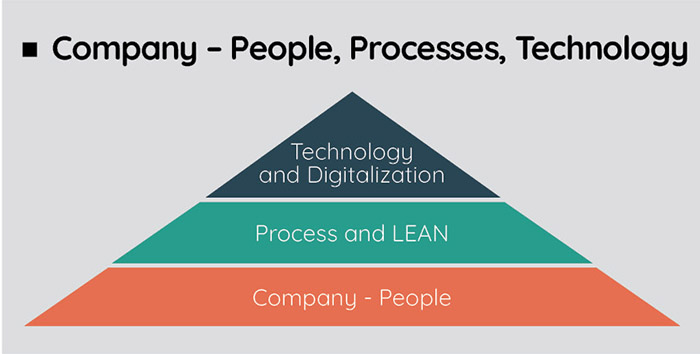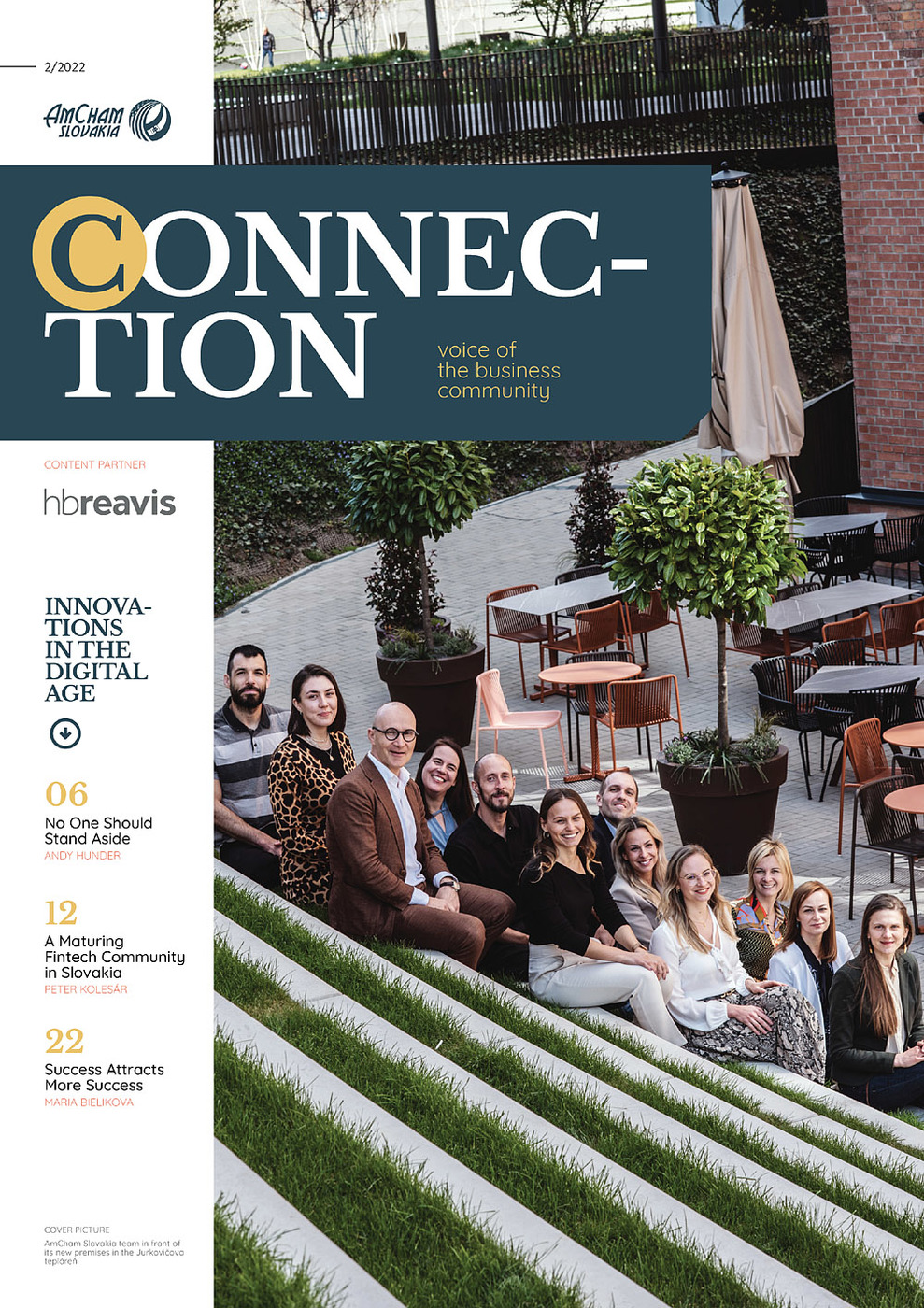The press, television, social networks, and presentations on the topic all provoke the feeling that the implementation of the latest technologies is a way to automatically eliminate shortcomings, solve problems, cover all the needs and grow the company. But is the right approach to modern technology really that simple? Does it guarantee success without any risks?
As a consultant, when dealing with companies, I most often encounter two approaches to the topic of digitalization. The first one can be summarized as “Our priority for this year is digitalization and the introduction of modern technologies”. The second approach, especially for smaller companies, is “Digitalization is expensive, unnecessary and complicated for us”. Based on these simplified statements, it could be said that whoever has the means should introduce technologies, grow the company, solve problems. Those who do not have the means are doomed to failure and stagnation. But is it really so? Are modern technologies a panacea and who cannot implement them is condemned to the role of observer?
In order to get a closer view of digitalization, it is necessary to say that implementation of modern technologies is nowadays financially affordable not only for the largest companies but also for smaller ones. However, a simplified view of digitalization, limited to the use of modern technologies and the replacement of analog data with digital data may not always bring the expected results. Digitalization, as a process of transforming information and processes into digital form, through the change of the model of business operations (digital transformation) should be based and be built not only on the technology itself. In order for technology to be deployed successfully and efficiently, in the necessary extent and with safety measures, it should take into account following factors:
- company environment and its culture
- processes and their status
- use of current IT technology
- problems to be solved
- company needs
This means knowing how the company works, what procedures it has in place, how effective it is, what problems or shortcomings it suffers from and why, what tools and how efficiently it uses, how it works with resources, including human resources, how it is organized. This approach, the so-called initial “realistic awareness” gives companies the opportunity to focus on what changes the company can implement in the first step without introducing any technology.
 The advantage of such an approach is the use of the company’s own hidden potential of resources. By applying the principle of “awareness”, we often recognize shortcomings, discover simple forms of remediation, learn to look for symptoms of weaknesses and find opportunities for improvement. If a company goes through this basic cognitive process, the reward will be a more precise definition of the real extent of the introduction of new technologies. This not only reduces the cost of purchasing the technology, financial and organizational complexity of the project, but also the risk of disappointment with the results after the introduction of digital technologies.
The advantage of such an approach is the use of the company’s own hidden potential of resources. By applying the principle of “awareness”, we often recognize shortcomings, discover simple forms of remediation, learn to look for symptoms of weaknesses and find opportunities for improvement. If a company goes through this basic cognitive process, the reward will be a more precise definition of the real extent of the introduction of new technologies. This not only reduces the cost of purchasing the technology, financial and organizational complexity of the project, but also the risk of disappointment with the results after the introduction of digital technologies.
How to systematically lead the process of finding these internal opportunities? One of the developed holistic methods of looking at the company’s established processes is the Lean process optimization method. Lean aims to optimize processes, identify deficiencies and simplify processes. This method has been successfully broadly applied also in our country for several years and many companies are dedicated to this area to provide services in the field of process optimization. Its application is not limited to certain segments, but can be used for manufacturing, administration, government, healthcare, industry, research, and many other sectors.
Practical experience shows that both Lean and digitalization concepts have a positive effect on each other. Lean brings value to digitalization by changing, setting up, cleaning the business environment, simplifying processes, identifying and eliminating shortcomings for successful and effective deployments of the necessary technology. Digitalization, on the other hand, offers Lean a continuous, automatically generated and accessible flow of new data, usable for further application of Lean principles.
The third but important factor in successful digitalization is, in addition to technologies and processes, the human element. Often, the human factor plays a key role in deciding whether a project ends in success or failure. Purchase of technologies and setting up processes can be implemented by suppliers. However, what cannot be ordered and purchased is the culture, goals of the company, relationships, communication, involvement of people in solving problems, its strategy, the values that the company professes.
 Digitalization is certainly an important part of growth, prosperity, an opportunity to respond to growing competition. It is a way to make more efficient use of companies’ resources. The final selection, scope and deployment of technology should be preceded by an initial discussion not only of what the technology can do, but to focus on the real problems and needs of the company, to identify opportunities for setup, change of internal processes, work organization.
Digitalization is certainly an important part of growth, prosperity, an opportunity to respond to growing competition. It is a way to make more efficient use of companies’ resources. The final selection, scope and deployment of technology should be preceded by an initial discussion not only of what the technology can do, but to focus on the real problems and needs of the company, to identify opportunities for setup, change of internal processes, work organization.
Ivan Tichov, IT Business Consultant, VGD Slovakia



Follow us